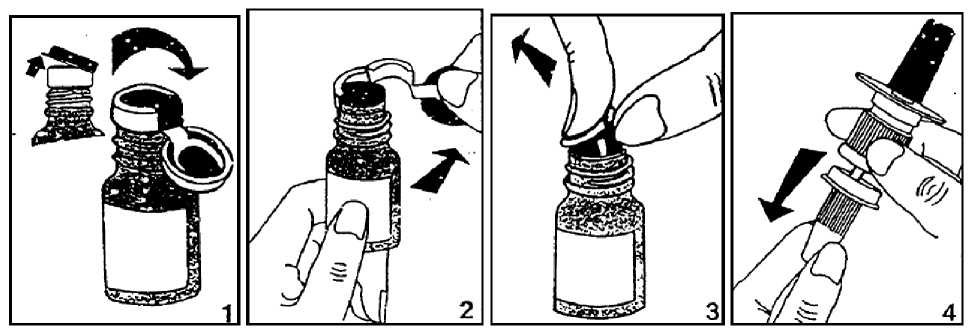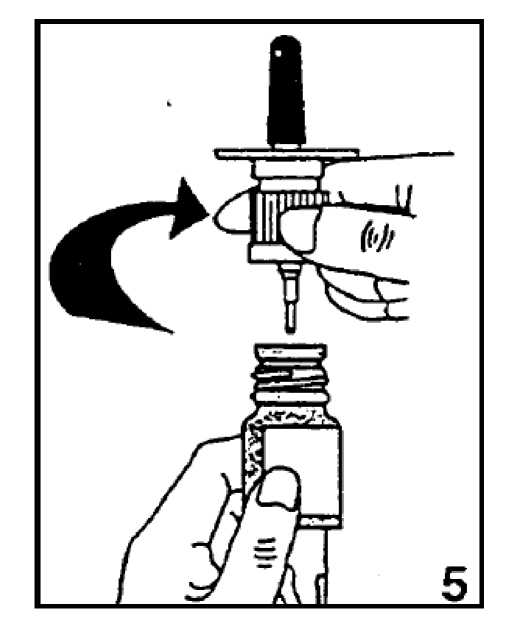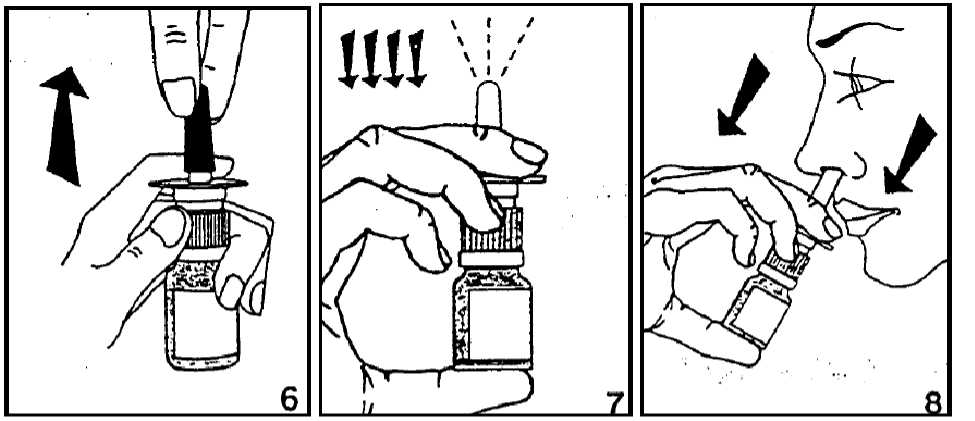Migranal Nasal Spray
PATIENT INFORMATION LEAFLET
Migranal 4 mg/ml nasal spray solution
dihydroergotamine mesilate
Read all of this leaflet carefully before you start using this medicine.
• Keep this leaflet. You may need to read it again.
• If you have any further questions, ask your doctor or pharmacist.
• This medicine has been prescribed for you. Do not pass it on to others. It may harm them, even if their symptoms are the same as yours.
• If any of the side effects gets serious, or if you notice any side effects not listed in this leaflet, please
tell your doctor or pharmacist.
In this leaflet:
1. What Migranal Nasal Spray is and what it is used for
2. Before you use Migranal Nasal Spray
3. How to use Migranal Nasal Spray
4. Possible side effects
5. How to store Migranal Nasal Spray
6. Further information
1. WHAT MIGRANAL NASAL SPRAY IS AND WHAT IT IS USED FOR
The name of your medicine is Migranal Nasal Spray. It contains a substance called dihydroergotamine mesilate.
Migranal Nasal Spray belongs to a group of medicines known as ergot alkaloids. It acts on special receptors in your body (5HT receptors), which are thought to be involved in migraine attacks.
Migranal Nasal Spray can therefore reduce the severity of an acute migraine attack.
Migranal Nasal Spray is used for the treatment of acute attacks of migraine with or without "aura" (the visual problems which some people experience just before an attack).
2. BEFORE YOU USE MIGRANAL NASAL SPRAY
Before using Migranal Nasal Spray it is important to read the following information.
Do not use Migranal Nasal Spray
• if you are allergic (hypersensitive) to dihydroergotamine or any of the other ingredients of Migranal Nasal Spray.
• if you have migraine associated with temporary loss of use of one side of the body (known as familial hemiplegic migraine) or migraine accompanied by symptoms such as vertigo, double vision (known as basilar migraine).
• if you suffer from inflammation of an artery at the side of your head (temporal arteritis).
• if you have a condition such as heart disease (particularly uncontrolled angina), disease of the blood vessels (including Raynaud’s syndrome), inadequately controlled high blood pressure, a history of head (cerebral) injury or mini-stroke (known as a transient ischaemic attack), a serious infection or shock.
• if you are breast-feeding, pregnant, or planning to become pregnant (see details below).
• if you have a severe liver disease.
• if you are being treated for an infection with an antibiotic such as erythromycin, troleandomycin or clarithromycin.
• if you are being treated with other medicines which constrict the blood vessels and are used to treat migraine, such as sumatriptan, naratriptan or zolmitriptan, or any other ergot alkaloids.
• if you are being treated for HIV/AIDS with a medicine containing the substance ritonavir, nelfinavir, indinavir.
• if you are being treated with medicines used to treat fungal infections (azolic antifungals) such as ketoconazole, itraconazole or voriconazole.
If any of these apply to you, tell your doctor before using Migranal Nasal Spray.
Take special care with Migranal Nasal Spray
• if you have a blocked nose, inflammation of the lining of the nose (rhinitis) or allergic rhinitis.
• if you have had a thickening of the membrane covering the lungs and lining the walls of the pleural cavity (pleural fibrosis) or a thickening of the abdominal lining that can cause obstruction of the urinary tract (retroperitoneal fibrosis) caused by other medicines.
• if you have mild to moderate problems with your liver, in particular cholestatic inflammation of the liver. Your doctor will need to reduce the dose.
If any of these apply to you, tell your doctor before taking Migranal Nasal Spray.
Do not use Migranal Nasal Spray continually in order to prevent a migraine attack. It should only be used to treat migraine once it has started.
Overuse of Migranal Nasal Spray may cause:
• chronic daily headaches when you stop using the medicine.
• vascular spasms in your hands and/or feet, with symptoms such as coldness, numbness and tingling, loss of movement, spasm, paleness, pain and weakness.
If you experience any of these, stop taking the medicine and tell your doctor immediately.
Taking other medicines
Please tell your doctor or pharmacist if you are taking or have recently taken any other medicines, including medicines obtained without a prescription.
Do not use Migranal Nasal Spray if you are taking any of the following medicines:
• antibiotics such as clarithromycin, erythromycin, troleandomycin, telithromycin and quinupristinedalfopristine;
• HIV/AIDS medicines such as ritonavir, indinavir, nelfinavir, delavirdine or efavirenz;
• antifungal drugs (e.g. ketoconazole, itraconazole, voriconazole);
• other migraine medicines (e.g. sumatriptan, naratriptan, zolmitriptan, eletriptan, almotriptan, frovatriptan) or any other ergotamine-based products or ergot alkaloids;
• antidepressant medicines such as nefazodone.
You should also take special care if you are a heavy smoker or you are using nicotine-containing products.
In addition, P-blockers such as propranolol (a medicine used both to prevent migraine and to treat high blood pressure) may cause interactions.
Migranal Nasal Spray and older people
Experience with use of Migranal Nasal Spray in patients aged over 65 years is limited.
Migranal Nasal Spray and children
The safety and efficacy of Migranal Nasal Spray in children under 16 years of age have not been established.
Pregnancy and breast-feeding
• Do not use Migranal Nasal Spray if you are pregnant. Using this medicine during pregnancy may cause serious damage to your unborn child. Tell your doctor if you are or think you are pregnant.
• Do not use Migranal Nasal Spray while breast-feeding. Tell your doctor if you are breastfeeding.
Ask your doctor or pharmacist for advice before taking any medicine.
Driving and using machines
Do not drive or use machines if you experience side effects such as dizziness or problems with your vision.
3. HOW TO USE MIGRANAL NASAL SPRAY
Always use Migranal Nasal Spray exactly as your doctor has told you. You should check with your doctor or pharmacist if you are not sure.
When and how much to use
You should administer one spray (0.5 mg = 1 metered dose) into each nostril at the first sign of a migraine attack.
If your migraine has not improved sufficiently after 15 minutes, then you may administer another spray in one or both nostrils.
The following recommendations must be observed:
• For a single migraine attack do not use more than 2 sprays in each nostril (4 metered doses).
• Do not use Migranal Nasal Spray to treat another migraine within 24 hours.
• Do not use more than 2 sprays in each nostril (4 metered doses) in 24 hours and no more than 8 sprays in each nostril in a week (16 metered doses).
• If you do not use all 4 doses in the device for one single migraine attack, you should throw what is left away. Do not keep it to use for your next migraine attack.
• Do not use Dihydergot injection or any other ergotamine containing products, or migraine medicines, e.g. sumatriptan, zolmitriptan, naratriptan or rizatriptan for 24 hours after using Migranal Nasal Spray.
• Do not use Migranal Nasal Spray within 6 hours after taking ‘triptan’ medicines (e.g. sumatriptan, zolmitriptan, eletriptan, almotriptan, frovatriptan).
Do not use a larger dose or use your nasal spray more frequently than your doctor advises.
If your migraine attacks do not get better or get worse, tell your doctor.
The spray device is for use in the nose only. The spray solution should not be injected or taken by mouth. How to prepare your nasal spray
Only prepare the nasal spray when you feel an attack of migraine starting. Once the spray device has been
put together, it should be used within 8 hours.


1. Pull back the blue seal by lifting the lip, but do not break the blue seal off the metal collar.
2. Tear off the whole cap and metal collar. The blue seal and metal collar should come off in one piece. If the blue seal snaps off, continue to remove the metal collar but take extra care as the edges of the metal collar may be sharp.
3. Carefully remove the rubber stopper from the bottle.
4. Gently remove the plastic protective cap from the bottom of the pump unit.
5. Insert the nasal spray pump unit into the open bottle and turn the pump clockwise to tighten.
How to use your nasal spray

6. Holding the bottle upright, gently remove the blue protective cap from the top of the nozzle.
7. Before the first use hold the nasal spray upright and press down firmly on the pump 4 times. Do not worry if a small amount of medicine sprays out during this time this is normal. This process is called priming.
8. Holding the spray upright, insert the nozzle and spray once into each nostril. Sniff vigorously several times to prevent the solution from running out of your nose. Do not blow your nose immediately after taking a dose.
Replace the blue cap and keep the spray unit handy in case you need it again later. You do not need to reprime the pump if you administer another spray in one or both nostrils.
If you use more Migranal Nasal Spray than you should
Tell your doctor immediately if you accidentally take more of your nasal spray than you were told, and if you experience any of the following symptoms: numbness and tingling in fingers and toes, a feeling of sickness or being sick, headache or pains in your chest.
If you have any further questions on the use of this product, ask your doctor or pharmacist.
4. POSSIBLE SIDE EFFECTS
Like all medicines, Migranal Nasal Spray can cause side effects, although not everybody gets them.
Some side effects can be serious:
Rare (affecting less than 1 in 1,000patients):
• chest pain
• symptoms of vascular spasms in hands and/or feet (coldness, numbness and tingling, loss of movement, spasm, paleness, pain and weakness)
• allergic (hypersensitivity) reactions such as skin rashes, swelling of the face, ‘nettle rash’ (urticaria), breathlessness
If you experience any of these, stop taking the medicine and tell your doctor immediately.
Other possible side effects:
Uncommon (affecting less than 1 in 100patients):
• sneezing
• a runny or blocked nose (rhinitis)
• flushes (where you feel unexpectedly hot)
• a feeling of sickness (nausea) and being sick (vomiting)
• dizziness
• numbness and tingling in the fingers and toes
• a decreased skin sensitivity
• disturbed sense of taste
Rare (affecting less than 1 in 1,000patients):
• diarrhoea
• sore throat
Not known (frequency cannot be estimated from the available data):
• nose bleeds
• muscular spasms
• abdominal pain
If any of the side effects gets serious, or if you notice any side effects not listed in this leaflet, please tell your doctor or pharmacist.
5. HOW TO STORE MIGRANAL NASAL SPRAY
Keep out of the reach and sight of children.
Do not use Migranal Nasal Spray after the expiry date which is stated on the carton. The expiry date refers to the last day of that month.
Do not store above 25oC.
Use within 8 hours once the spray device has been assembled.
Medicines should not be disposed of via wastewater or household waste. Ask your pharmacist how to dispose of medicines no longer required. These measures will help to protect the environment.
6. FURTHER INFORMATION What Migranal Nasal Spray contains
• The active substance is dihydroergotamine mesilate. Each ml contains 4 mg dihydroergotamine mesilate. One dose delivers 0.5 mg dihydroergotamine mesilate.
• The other ingredients are caffeine, anhydrous glucose, purified water.
What Migranal Nasal Spray looks like and contents of the pack
Migranal 4 mg/ml nasal spray solution is a clear, colourless to faintly yellow solution.
Migranal Nasal Spray comes in packs containing 1, 2 or 6 spray devices/vials.
Not all pack sizes may be marketed in your country.
Marketing Authorisation Holder
Amdipharm UK Limited
Capital House, 85 King William Street,
London, EC4N 7BL United Kingdom
Manufacturer
Amdipharm UK limited
Capital House, 85 King William Street,
London, EC4N 7BL United Kingdom
This medicinal product is authorized in the Member States of the EEA under the following names:
Austria: Migranal Belgium: Diergo France: Diergospray United Kingdom: Migranal
This leaflet was last approved in May 2016.